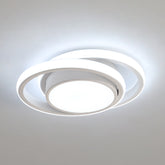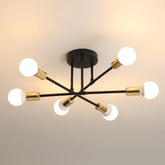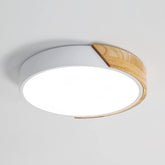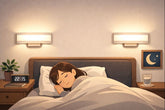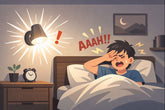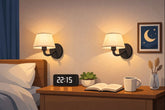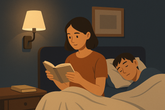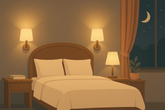Light Flicker: The Hidden Health Hazard Lurking in Your Home Lighting
Eyestrain, fatigue, headaches... These may all be symptoms of an invisible threat—light flicker. In this article, we’ll break down what flicker is, how it affects your body, and how to test and eliminate it from your lighting environment.
1. What Is Light Flicker?
Flicker refers to the rapid, repetitive fluctuation of a light source’s brightness. While flicker above 50Hz is often invisible to the human eye, it can still be sensed by the brain and nervous system.
- Common sources: Low-quality LEDs, fluorescent lamps, or poorly calibrated screens.
- Measured by: Frequency (Hz) and flicker percentage (modulation depth).
How Does Flicker Occur?
| Light Source | Cause | Frequency Range |
|---|---|---|
| Fluorescent Lamps | Low-frequency AC current or magnetic ballasts | 50Hz – 50kHz |
| LEDs | Poor driver quality, low PWM dimming frequencies | 100Hz – 10kHz |
| Screens (LCD) | LED backlight flicker due to PWM control | 100Hz – 2000Hz |
2. Health Effects of Light Flicker
Eye-Related Issues
- Visual Fatigue: Constant micro-adjustments by eye muscles increase strain.
- Myopia Risk: Especially in children; long-term flicker exposure may damage retinal cells.
- Blur and Ghosting: Flicker may interfere with motion perception and cause visual artifacts.
Systemic Health Risks
- Neurological Interference: Flicker at 10–200Hz can cause migraines and focus issues.
- Photosensitive Epilepsy: Flicker in the 5–30Hz range can trigger seizures in sensitive individuals.
- Sleep Disruption: Flicker can interfere with melatonin production and circadian rhythms.
3. How to Detect Flicker
Method 1: Smartphone Camera Test
- Open your phone camera and point it at the light source.
- Record a short video and replay it.
- Visible rolling bars or flickering in the video indicates flicker.
Method 2: Professional Equipment
- Flicker meters (e.g., PCE-FLM 100) measure flicker frequency and depth.
- Oscilloscopes check driver power ripple (good LED drivers should have <5% ripple).
Method 3: Subjective Symptoms
After 10 minutes of exposure, flicker may cause:
- Eye soreness
- Dizziness or nausea
- Afterimages when closing eyes
4. Flicker Characteristics by Light Source
| Light Source | Flicker Behavior | Recommendation |
|---|---|---|
| Incandescent/Halogen | Virtually no flicker (but inefficient and outdated) | ★☆☆☆☆ |
| Fluorescents | Low-frequency flicker unless using electronic ballasts | ★★☆☆☆ |
| High-quality LEDs | PWM ≥ 3000Hz or flicker-free DC dimming | ★★★★★ |
| Low-quality LEDs | Low-frequency PWM, high modulation depth | ★☆☆☆☆ |
5. How to Reduce Flicker at Home
Choose the Right Fixtures
- Look for certified flicker-free LEDs (flicker index <3%)
- Use your phone to test before purchasing
Improve Your Lighting Environment
- Balance brightness – avoid stark contrast between screen and room lighting
- Use layered lighting: ceiling light + desk lamp
- Add indoor plants (e.g., fiddle leaf fig) to diffuse light softly
Protective Habits
- Follow the 20-20-20 rule: every 20 minutes, look at something 20 feet away for 20 seconds
- Wear flicker-filtering glasses (useful for gamers, lighting professionals)
Conclusion: Let Light Work for Your Health
Light flicker may be invisible, but it can silently affect your health every day. For children, office workers, and anyone under artificial lighting for hours, choosing flicker-free lighting is more than an eye-care decision—it's a long-term wellness investment. Test your lights, choose wisely, and make sure every ray of light in your home supports your well-being.
